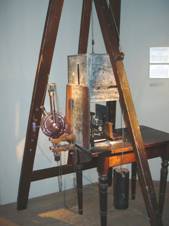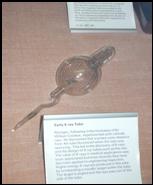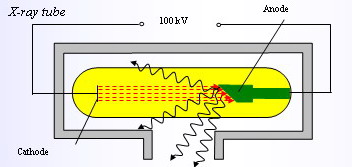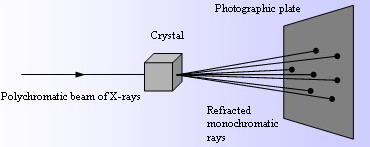A super poison
|

First X-ray medical apparatus Deutsche Museum, München |
1. Rwo super poisons exist in nature. The first is, botulism, the second is tetanus:
both of them kill in microgram amounts, by paralyzing the nervous system - tetanus by contractions,
botulism by the atony. What do they have in common? A zinc atom along the protein chain, surrounded
by four aminoacids. How do we know this? From X-rays.
|
|

K. M. Renisch, M.L. Nibert, S. C. Harrison, Nature, Vol. 404 (2000) 960 Structure of the reovirus core at 3.6 |
|
First tube for X-rays Science
Museum, London 
|

A penetrating electromagnetic radiation
(X-radiation) is generated by slowing-down electrons or heavy charged
particles. In an x-ray tube, electrons are accelerated by means of a high
direct voltage to bombard a metal electrode. We call this slowing down a
“bremsstrahlung”.
Wilhelm Conrad Röntgen discovered X-rays by the case,
on 25.11.1895. Then, he spent 5 weeks closed in the lab to study their
nature. He received the first Nobel Prize in Physics, in 1901. |
|
|
Röntgen tried to verify the nature of the new rays: are
they charged particles, like cathode rays (i.e. electrons) or
electromagnetic waves, like the visible light. He notices that X-rays propagate on straight lines and
are not affected by electric or magnetic fields, so they could be
electromagnetic waves but are not subject to refraction, interference or
polarization. So for him, these were really “X-rays”.
Now, we know, that X-ray are EM waves, but ultrashort
(in the Å range), so an appropriate diffraction grid must have the same
order of spacing. A crystal of atoms would do it! |
|
 Diffraction of X-rays in monocrystal (configuration of von Laue)
Atoms, regularly positioned in crystals, form a diffraction grating for X-rays. Specific
patters on the screen allow to determine the symmetry and reticular constants of the crystal. |
|
|